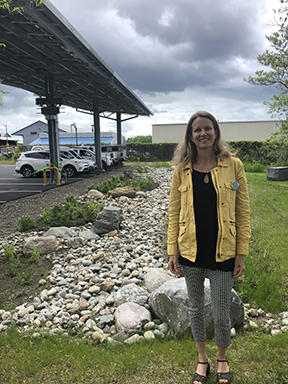Green stormwater infrastructure (GSI) aims to manage runoff from impervious surfaces using natural processes to reduce hydrologic and water quality impacts on receiving waters. Bioretention is a type of GSI that utilizes soil media and vegetation to store and filter stormwater. While bioretention systems can effectively slow and store runoff and capture sediments, performance in capturing and filtering nutrient pollutants is variable. In addition, lack of maintenance, and poor vegetation selection can cause bioretention systems to under-perform in terms of both ecological function and aesthetic goals.
This presentation will review recent and ongoing research based on multiple bioretention studies conducted at the University of Vermont, across urban, suburban, and agricultural land uses. Topics will include: vegetation selection for cold climate conditions, Vermont resident and municipal officials’ perceptions of maintenance needs and aesthetics of bioretention systems, concerns about the use of compost in bioretention soil media, and the potential to capture phosphorus by using aluminum- and iron-based Drinking Water Treatment Residuals (DWTR) as a soil amendment.

Stephanie Hurley is an Associate Professor of Landscape Design in the Department of Plant & Soil Science at the University of Vermont. Her research and teaching span disciplines within the fields of landscape architecture, ecological design, restoration, and planning. She is the director of the UVM Bioretention Laboratory, which designs and monitors green stormwater infrastructure in urban and agricultural settings. Her other recent research focuses on the use of landscape visualizations in stakeholder decision-making processes pertaining to adoption of climate change best management practices.